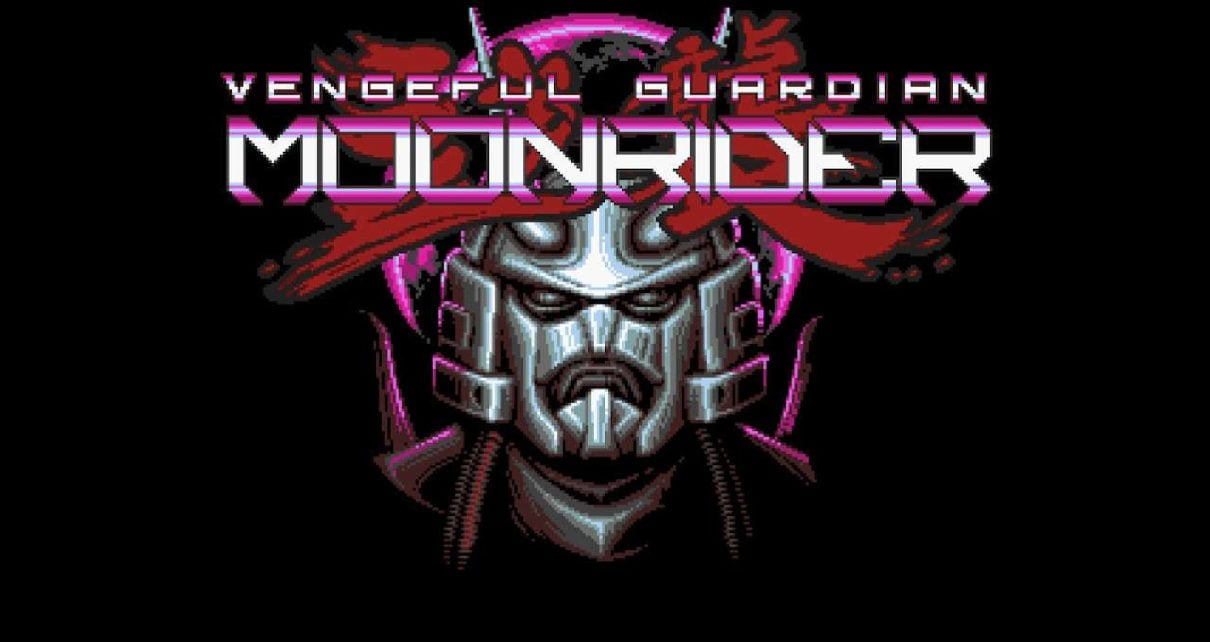Vengeful Guardian: Moonrider: could you think of a more apt name for a game inspired by 90s Ninja games? Especially one involving a robotic ninja, buckets of vengeance, and vehicle sections with a sweet motorbike? Joymasher and The Arcade Crew are back once again to deliver a slice of 16-Bit action that leans towards emulation instead of inspiration. Grab your sword dear reader — we are dishing out some Ninja justice.
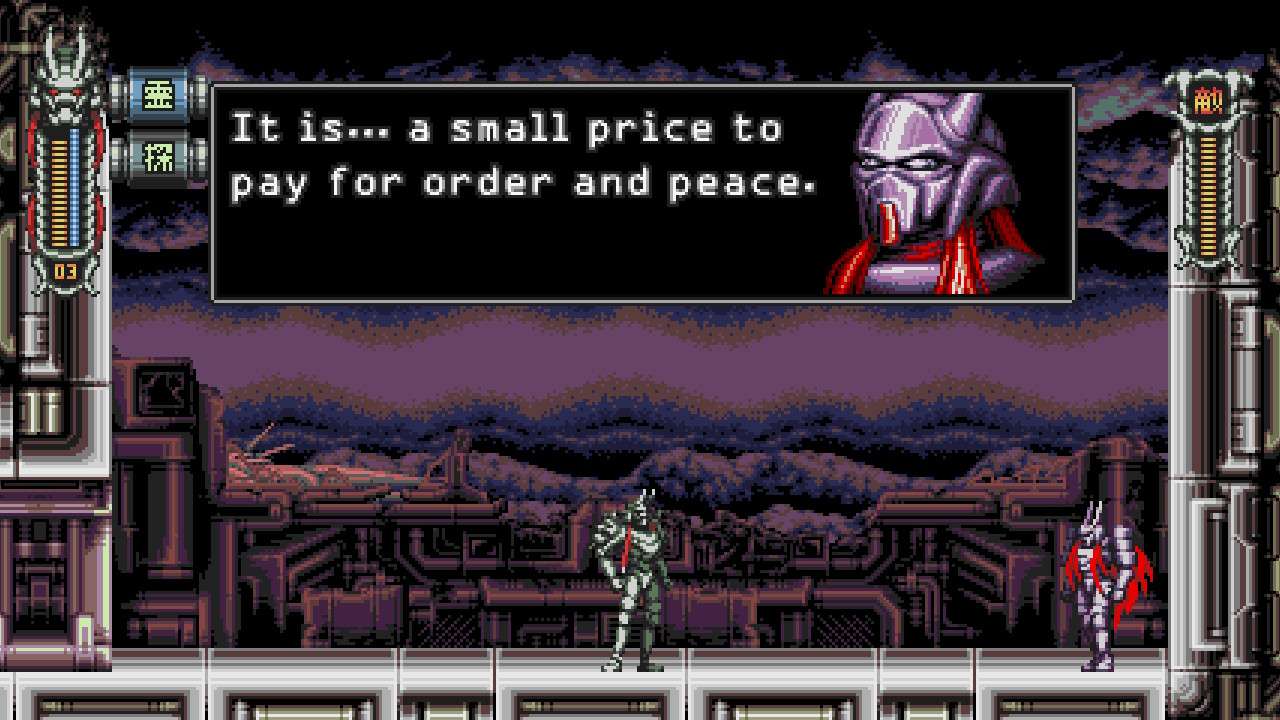
Press Start To Skip
The world is being controlled by an oppressive authority. While having a steely grip on the world as we know it, they fall into the classic trap of extending themselves too far; They activate the Robotic Ninja Unit known as Moonrider. Moonrider doesn’t want to follow them. Breaking out of the lab they have been contained in, they decide to save the world by taking down the leaders of the authority and as such spark a rebellion bathed in blood.
The narrative isn’t Vengeful Guardian: Moonrider’s strong suit. Yes, there is a story here. It’s mostly told through the intro cutscene and before the boss fights with a brief dialogue exchange before you throw hands. Like most “retro” games, the narrative is more window dressing and an excuse for why a cyber ninja is slicing his way through everything in its path. It’s not so much a tool to deliver character development and thought-provoking discussion. In the nicest way possible, this game isn’t going to be remembered for the tale it told, but rather for the adventure.
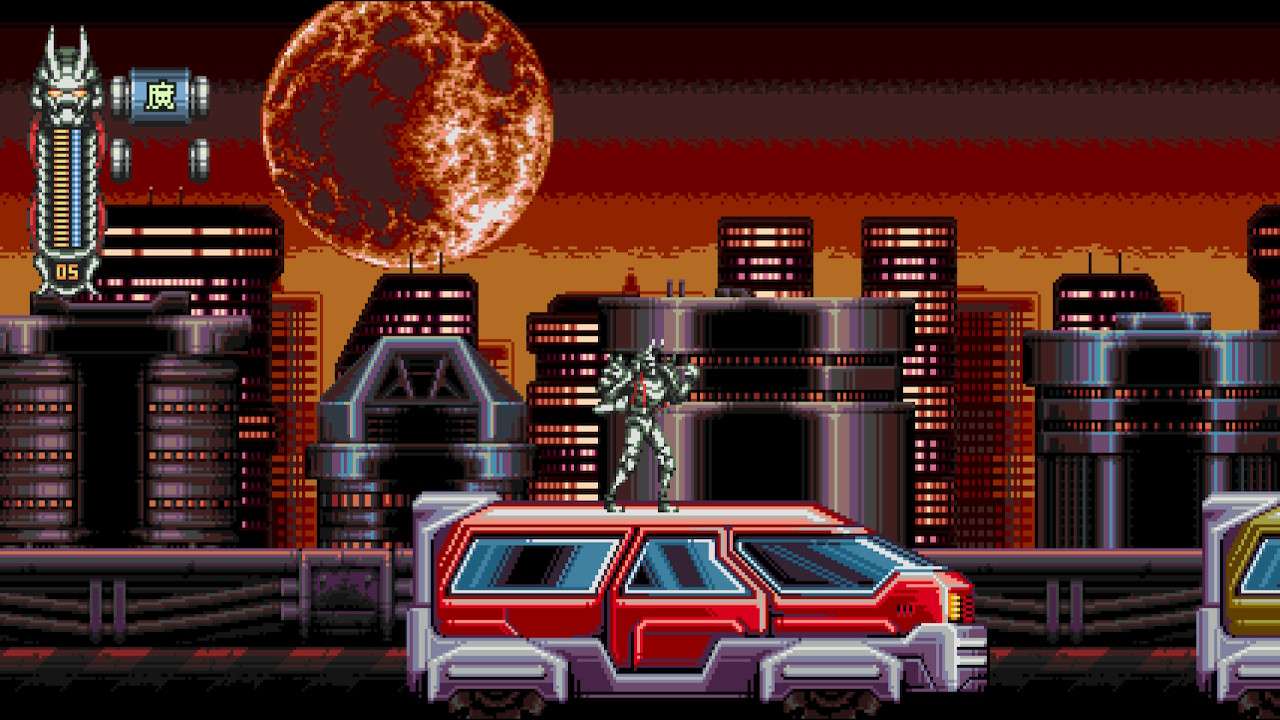
Look At That Stride!
Retro fans will quickly see the obvious inspirations for Vengeful Guardian: Moonrider in how it plays. You’ve got a pinch of Ninja Gaiden, a taster of Shinobi III, and just a tasty dollop of Capcom’s woefully underused Strider series here. Mix to create the perfect bowl of Ninja Action Platforming stew.
The game is a 2D Action Platformer that sees you taking the fight to the authority over a selection of eight levels. After clearing the first stage, it unlocks the rest, barring the final level which needs all those before it to be completed. This gives off Megaman vibes, but at least through my playthrough, there didn’t seem to be an ideal “route” through these. It’s more a personal preference in which stage you wish to attempt.
Moonrider is a nimble unit. While the default speed is walking, you can either hold the shoulder button or double-tap a direction to see them sprint off with all the gusto of Naruto. They can jump, wall jump with ease, wave their sword around in a 3-hit combo, use any of the handy sub-weapons, and finally dive kick from the air which is surprisingly one of the most useful bits of kit in Moonrider’s arsenal.
You’ll use all of the above techniques to traverse some deliciously devious 2D platforming stages. These range from the rather basic laboratory settings to jumping from airship to airship to catch up with an even larger airship. My favorite stage sees you jumping from car to car to catch up with a convoy while dodging Snipers and drones with near-perfect accuracy.
While not all stages are as memorable as those mentioned, there was only really one duff level I found. In no surprise, that was the stage that featured sections dealing with water, something that I find is rarely done well in any game, and coupling it up with a maze-like structure somewhat killed the pace. Finding the hidden items within its walls was particularly painful.
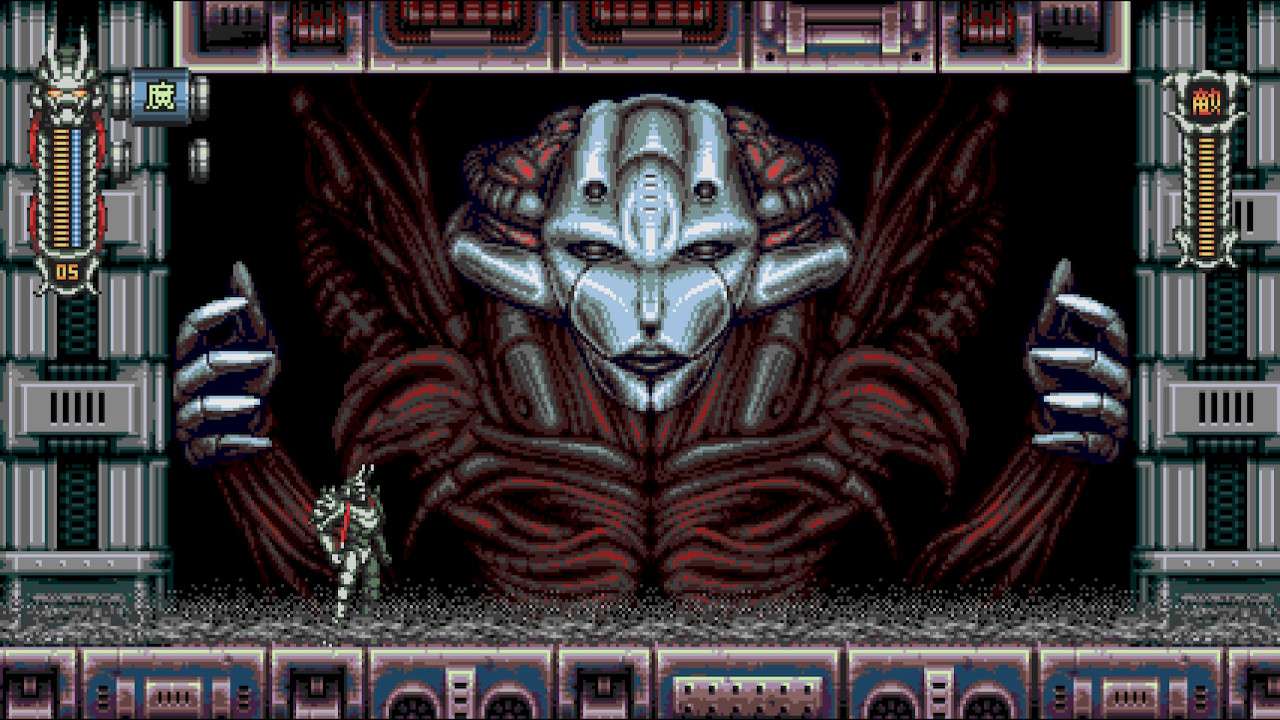
Secrets, Upgrades, and Bosses Oh My!
Each of the stages hides one or two secret upgrades that you can find in obscure sections, usually hidden by a wall you can break or a jump that looks like you can just about make it off the beaten path. Fortunately, one of the stages upgrades gives you the ability to track said upgrades by marking areas with a green question mark. Obviously, the catch-22 with this is that you have to find that upgrade first!
On the topic of the upgrades, you can equip two of them at the start of a stage. These help you decide what you want from this particular run. They do stuff ranging from HP/MP regeneration to extending your combos. For the masochists out there, you can even equip the “glass cannon” upgrade which turns the game into a “1 hit death” situation. Feel you have truly become one with the Moonrider? This is your test.
Each stage culminates in a boss battle which on the first attempt will usually see you using up at least one of your three (or more if collected) lives. Naturally, these range from the predictable giant almost alien-like foes to mechs and then the dreaded human-sized enemies who also have to be mechanically enhanced ninjas. In return for beating them, you don’t only progress but can unlock additional sub-weapons.
Vengeful Guardian: Moonrider isn’t the longest of titles. If you want to find all the secrets and even tack on the tutorial you’ll still see the credits roll within three hours, that is if you’re willing to replay a few stages due to some difficulty spikes and the lives system. While the difficulty can be initially daunting, the game offers you enough tools from the get-go and the unlocks to make it manageable enough to see the credits. That is unless you’re a Glass Cannon, then my hat is off to you!
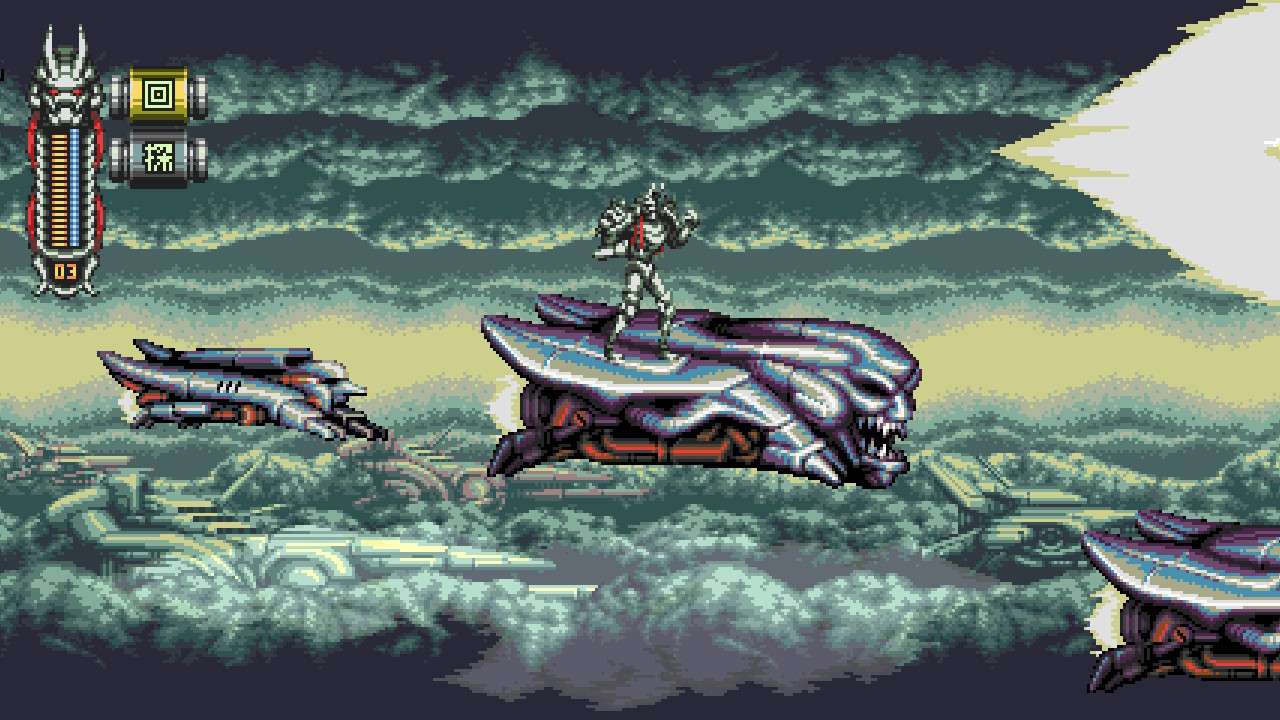
Blast Processing 2.0
In terms of visuals and presentation, if you gave me this game with no context and handed me a six-button Mega Drive pad I wouldn’t have even questioned whether it was a game designed for the Sega console. It has the visual style and musical chunk that was more commonly seen on the console with Blast Processing and a 32X add-on than the slightly more colorful family unit from Nintendo.
While I mentioned it feels like a game from the Mega/32X/CD era, it also does something a lot of 16-Bit indie titles inspired by it seem to miss. It doesn’t overextend with visuals and effects that weren’t commonplace or even possible at the time. The sprites, the levels, and the effects all look like they could have run on the consoles of old and don’t look like an imitation with a new lick of paint. It’s deliciously old-school-looking, warts and all, even down to the digitized voice samples from the boss fights.
Nothing I said above should be taken as a negative. Much like the developer’s previous game Blazing Chrome, it seems to have been developed not only as a homage but as closely as possible to original hardware constraints. It nails its existence as a new “16-bit” title rather than something more inspired by it. This is something that my old retro bones couldn’t appreciate more if I tried.
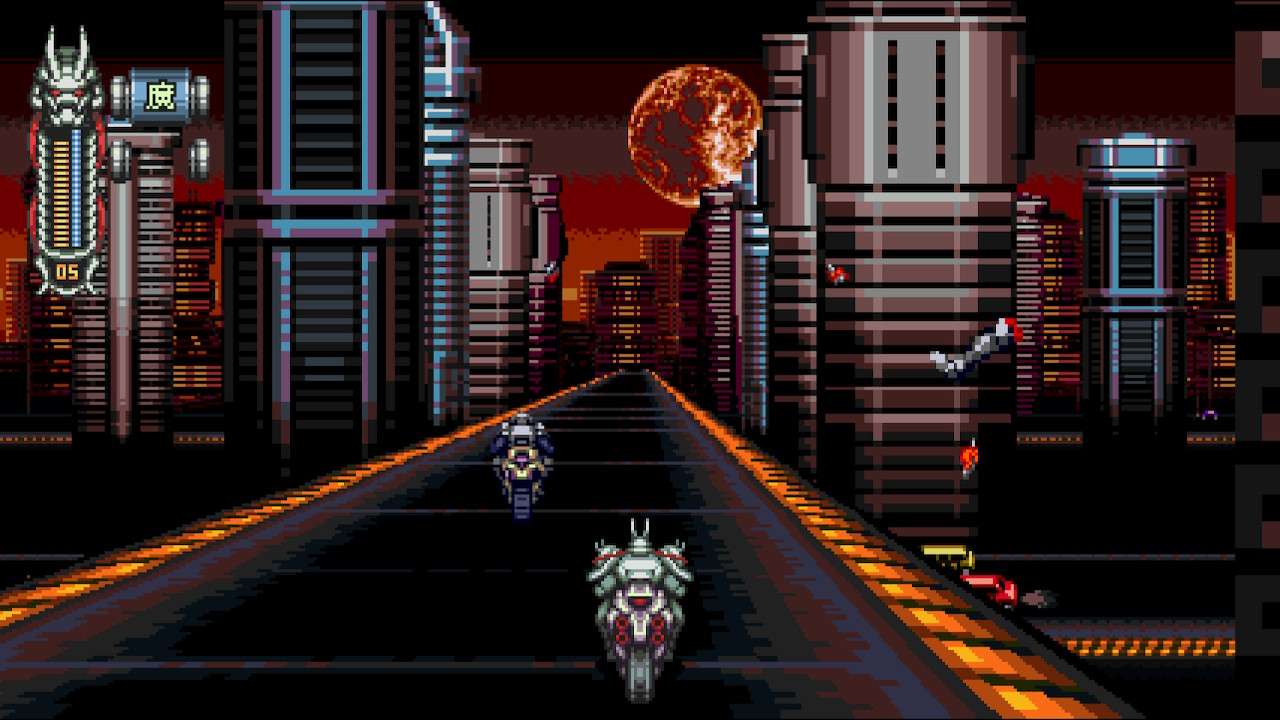
Verdict
Vengeful Guardian: Moonrider has a steel-like focus on its demographic: people who either grew up with titles like Shinobi and Strider or people who have taken the dive into retro gaming and want the thrill of something new that feels authentic to the time period.
The short run time, use of a lives system, and difficulty that some may feel is cheap may deter some gamers. That said, all in all, the developers have knocked it out of the park once again with some high-octane ninja action with intuitive controls, smooth gameplay, and the kind of pick-up-and-play style hook that the loftier AAA games just don’t have.
VENGEFUL GUARDIAN: MOONRIDER IS RECOMMENDED

If you would like to see more Retro-style games, you may be interested in our review of River City Saga: Three Kingdoms.
Many thanks go to The Arcade Crew for a Nintendo Switch review code for this title.
Pride of utopia & greatest thing ever, I found the One Piece, Collected the Dragon Balls & won the Mortal Kombat Tournament in one night, it was quiet for me that night! Follow me on Twitter @powahdunk

